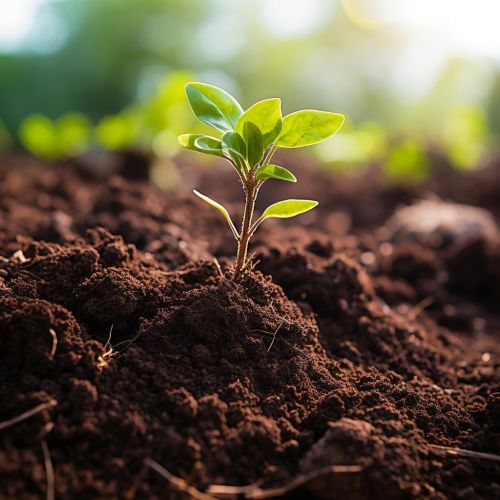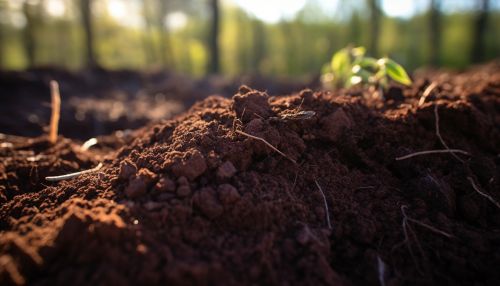Mechanisms of Soil Carbon Sequestration in Agroecosystems
Introduction
Soil carbon sequestration refers to the process by which carbon dioxide (CO2) is captured from the atmosphere and stored in the soil carbon pool in the form of organic matter. This process plays a crucial role in the global carbon cycle and is of particular importance in agroecosystems, where it can enhance soil health, improve agricultural productivity, and mitigate climate change.


Mechanisms of Soil Carbon Sequestration
The primary mechanisms of soil carbon sequestration in agroecosystems include photosynthesis, carbon input through plant residues and manure, and the formation and stabilization of soil organic matter.
Photosynthesis
The process of soil carbon sequestration begins with photosynthesis, the process by which green plants, algae, and some bacteria convert sunlight, water, and carbon dioxide into glucose and oxygen. The glucose is used by the plants for growth and reproduction, while the oxygen is released back into the atmosphere.
Carbon Input Through Plant Residues and Manure
After photosynthesis, the next step in the carbon sequestration process is the input of carbon into the soil through plant residues and manure. When plants die, their residues (such as leaves, stems, and roots) are returned to the soil. These residues, which are rich in carbon, are broken down by soil organisms, a process that leads to the formation of soil organic matter.
Similarly, when livestock graze on plants, they consume plant material and return a portion of the carbon to the soil through their manure. This manure, like plant residues, is broken down by soil organisms, contributing to the formation of soil organic matter.
Formation and Stabilization of Soil Organic Matter
Soil organic matter (SOM) is the end product of the decomposition of plant and animal residues. It is a complex mixture of partially and fully decomposed organic material, as well as living microorganisms and soil animals. SOM is the primary sink for carbon in the soil and plays a crucial role in soil carbon sequestration.
The formation of SOM involves the physical and chemical transformation of plant and animal residues by soil organisms. These transformations lead to the formation of humus, a stable form of organic matter that is resistant to further decomposition and can remain in the soil for hundreds to thousands of years.
The stabilization of SOM, on the other hand, involves the interaction of humus with soil minerals. This interaction forms stable aggregates that protect the humus from further decomposition, thereby sequestering the carbon in the soil.
Factors Influencing Soil Carbon Sequestration
Several factors can influence the rate and extent of soil carbon sequestration in agroecosystems. These include climate, soil type, land use, and management practices.
Climate
Climate, particularly temperature and precipitation, can have a significant impact on soil carbon sequestration. In general, warmer temperatures and higher levels of precipitation can increase the rate of decomposition of organic matter, thereby reducing the amount of carbon that can be sequestered in the soil. However, these effects can be offset by increased plant productivity, which can lead to greater carbon inputs into the soil.
Soil Type
Soil type can also influence soil carbon sequestration. Soils with high clay content, for example, can sequester more carbon than sandy soils because clay particles can protect organic matter from decomposition.
Land Use
Land use can have a significant impact on soil carbon sequestration. For example, forests and grasslands can sequester more carbon than croplands because they have higher levels of plant productivity and organic matter inputs. However, changes in land use, such as the conversion of forests to croplands, can lead to the release of stored carbon, thereby reducing the amount of carbon that can be sequestered in the soil.
Management Practices
Management practices, such as tillage, crop rotation, and the use of cover crops, can influence soil carbon sequestration. For example, no-till farming can increase soil carbon sequestration by reducing the disruption of soil aggregates and the exposure of organic matter to decomposition. Similarly, the use of cover crops can increase carbon inputs into the soil, thereby enhancing soil carbon sequestration.
Implications for Climate Change Mitigation and Sustainable Agriculture
Soil carbon sequestration in agroecosystems has significant implications for climate change mitigation and sustainable agriculture. By capturing and storing carbon, agroecosystems can help offset greenhouse gas emissions and mitigate climate change. Moreover, soil carbon sequestration can enhance soil health and fertility, improve water retention and nutrient cycling, and increase agricultural productivity, thereby contributing to sustainable agriculture.
